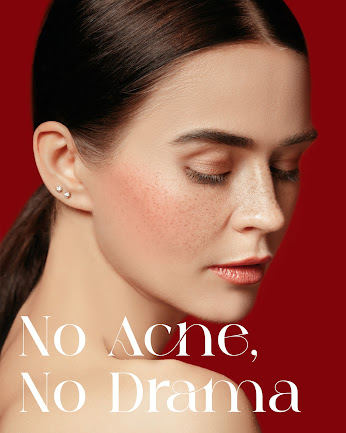Choosing the Right Cleanser: Gel, Cream or Hydrating?
1. Why the Cleanser Type Matters
Not all cleansers are created equal. The texture, ingredients, and overall design of a cleanser determine:
-
How well it removes dirt, oil, makeup
-
How gentle or stripping it is
-
Whether it supports or disrupts your skin barrier
Picking a cleanser that mismatches your skin type or climate can lead to tightness, breakouts, or irritation. So before you just grab what’s on sale, it’s good to understand the key differences.
2. Gel Cleansers: Deep Cleaners with a Fresh Feel
What they are & how they work
Gel cleansers are water-based and often contain mild surfactants that foam or lather when activated with water. They aim to dissolve oils, sebum, and light makeup, leaving the skin feeling refreshed.
Strengths
-
Excellent for removing excess oil, sunscreen, or daily grime
-
Leaves a sensation of “clean slate”
-
Usually lightweight, non-greasy
Weaknesses
-
Can lean too drying if the formula lacks hydrating agents
-
May sting or irritate sensitive skin if harsh surfactants are used
-
Might not be sufficient alone to remove heavy makeup
Best fit
-
Oily skin
-
Combination skin (especially the T-zone)
-
Hot or humid climates where oil production is high
3. Cream Cleansers: Nourishing & Soothing
What they are & how they work
Cream cleansers (or cleansing milks/lotions) are richer, often containing oils, emollients, and moisturizing agents. They cleanse by dissolving makeup or surface impurities while leaving behind hydration.
Strengths
-
Maintain moisture barrier
-
Gentle and comforting (great for sensitive or dry skin)
-
Good at removing sunscreen and light makeup with less tugging
Weaknesses
-
Might leave a slight film if not rinsed well
-
Could feel too rich in very oily or humid conditions
-
Less foaming sensation (which some people prefer)
Best fit
-
Dry or dehydrated skin
-
Sensitive skin types
-
Cooler or dry climates
-
Mature skin
4. Hydrating Cleansers: The Middle Ground
What they are & how they work
Hydrating cleansers bridge the gap often combining gel or cream textures with humectants (like glycerin, hyaluronic acid) and mild surfactants. Their goal is to cleanse without compromising moisture levels.
Strengths
-
Cleanse gently while supporting barrier
-
Less risk of tightness after washing
-
Versatile usable for many skin types
Weaknesses
-
If overrich, may not suit very oily skin
-
Might not fully remove heavy makeup or SPF may need double cleanse
Best fit
-
Normal to dry skin
-
Dehydrated skin (tight but not necessarily dry)
-
Skin undergoing treatments (like retinoids)
-
Combination skin needing balance
5. Side-by-Side Comparison
| Feature | Gel Cleanser | Cream Cleanser | Hydrating Cleanser |
|---|---|---|---|
| Texture / Feel | Transparent, gel-like | Milky, creamy | Gel-cream hybrid |
| Foam / Lather | Medium to high | Little to none | Low to moderate |
| Key Benefit | Oil control, deep clean | Gentle hydration, soothing | Balanced hydration + cleansing |
| Best For | Oily, acne-prone, combo | Dry, sensitive, mature | Normal, dehydrated, combo |
| Potential Drawback | Can dry out skin | Might feel heavy / leave residue | May need double cleanse for heavy makeup |
6. How to Pick (And Use) the Right Cleanser
Step 1: Evaluate your skin
Ask: Does your skin feel greasy soon after washing? Or does it feel tight and scratchy? Does it react to new products easily? This gives clues whether you're oily, dry, sensitive, or somewhere in between.
Step 2: Consider your climate and season
Summer and humid weather often push skin to produce more oil gel formulas may work better. In winter or dry climates, cream or hydrating options help lock in moisture.
Step 3: Patch test
Always try a new cleanser on a small patch (like your jawline) for a few days before full-face usage.
Step 4: Use the correct method
-
Use lukewarm water, not hot, to avoid barrier damage
-
Take 30–60 seconds to massage the cleanser in
-
If wearing heavy makeup or SPF, double cleanse (oil-based first, then chosen cleanser)
-
After cleansing, pat dry (don’t rub) and follow immediately with a moisturizer
Step 5: Adjust over time
Your skin’s needs can change hormonal cycles, age, seasons so don’t hesitate to switch textures or formulas when your skin signals it.
7. Common Mistakes to Avoid
-
Over-cleansing: More isn’t better. Twice a day is often sufficient.
-
Using harsh surfactants or high alcohol cleansers: These can strip oils and damage the barrier.
-
Ignoring pH balance: Cleansers with a pH too far from skin’s natural ~5.5 may disrupt its acid mantle.
-
Skipping makeup removal first: Heavy makeup or sunscreen often needs a first step (oil or balm).
-
Sticking rigidly to one type year-round: Be flexible your skin in winter vs summer may prefer different textures.
8. Real-World Examples & Tips
-
Oily + sensitive combo: Try a gel cleanser that includes hydrating ingredients like aloe or panthenol.
-
Dry skin in winter: Use a cream or hydrating cleanser in the evening, and perhaps a gentler gel in the morning.
-
Acne treatments: If you’re using actives (like retinoids or benzoyl peroxide), a hydrating cleanser can help reduce irritation.
-
Switch strategies: Some people use a gel on their T-zone and a cream on dry cheeks splitting the routine by area.
9. Final Thoughts
There’s no one-size-fits-all answer. Gel, cream, and hydrating cleansers each have strengths depending on your skin type, environment, and preferences. The best cleanser is the one you’ll consistently use without damaging your skin.
If you listen to your skin’s feedback (tightness, oiliness, irritation), and stay open to adjusting over time, you’ll land on the right formula. Clean gently, treat your skin kindly and everything else in your routine will perform better.
FOR MORE INFORMATION VISIT
The Art of Choosing the Right Cleanser for Dry Skin!
SPF All Year Round: The Everyday Glow Secret
Why Face Serums Deserve a Spot in Your Cathy Doll Routine
Decode Your Breakouts: What Your Acne Could Be Telling You
Glow Oil-Free with Vitamin C — Your Oily Skin’s BFF
Effortless Morning Radiance: Your Quick Guide to Glowing Skin




Comments
Post a Comment